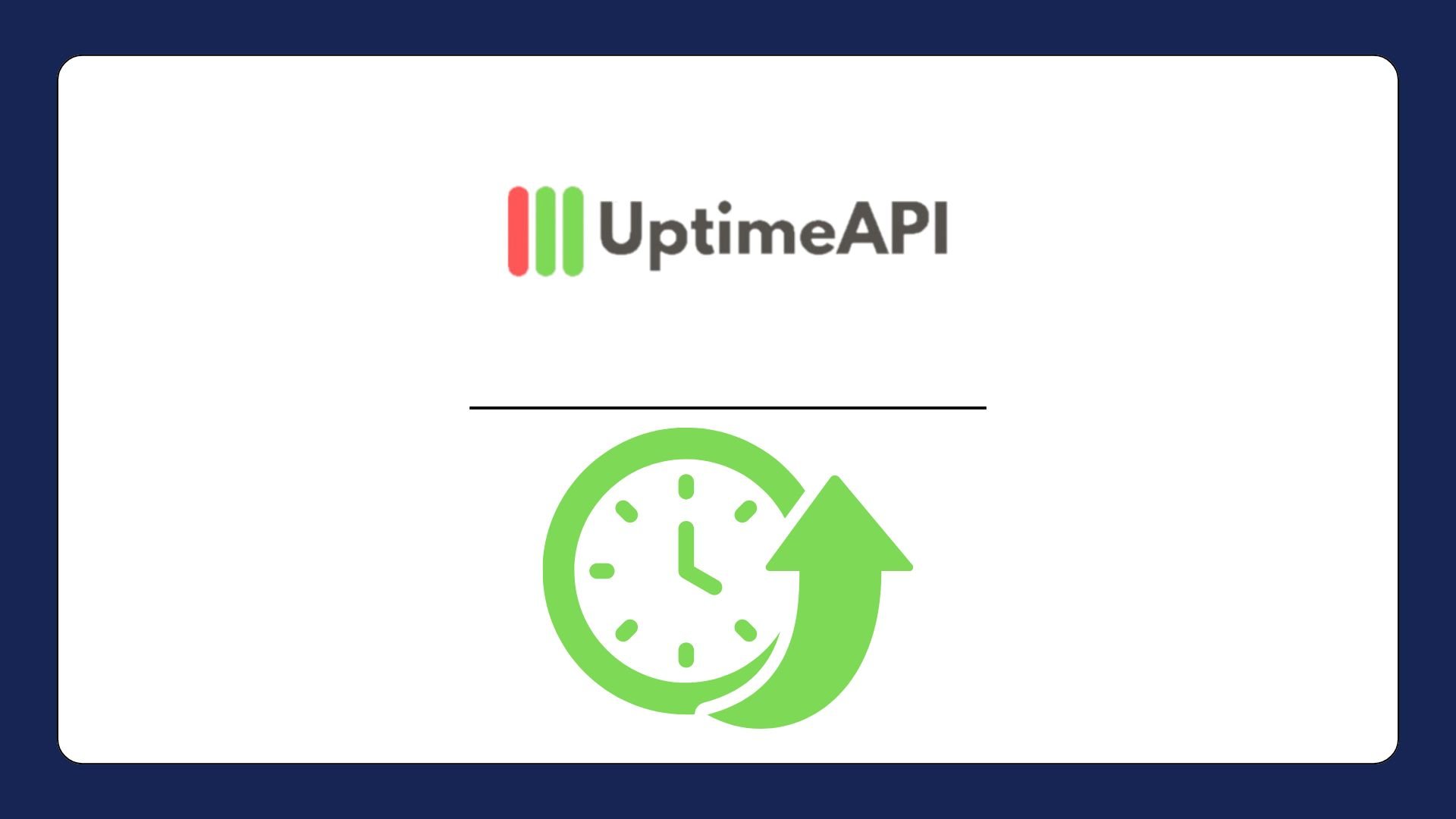REST API Uptime And Reliability

For developers, it becomes essential to guarantee the uptime and performance of these APIs. In this case, uptime monitoring technologies such as Uptime API are crucial. Keeping your REST API Uptime high ensures that your apps run smoothly and provide users with the most experience possible with the fewest disruptions.
How Uptime API Works
Getting started with Uptime API is simple. Here’s a step-by-step process to set up REST API Uptime monitoring:
- Sign Up: Developers can sign up for Uptime API on their website and choose the plan that best suits their needs, whether it's for a small project or a larger-scale deployment.
- Add Your API: Once signed in, users can add their API by providing the necessary details, including the API's URL and any authentication requirements.
- Configure Monitoring Parameters: Developers can customize how they want to monitor their API. This includes setting thresholds for acceptable response times, defining uptime percentages, and choosing regions from which to monitor the API.
- Set Up Alerts: Users can set up custom alerts to notify them whenever their API's performance falls below the set criteria. This can include email, SMS, or Slack notifications, ensuring that the development team is always aware of potential issues.
- Monitor in Real-Time: After configuration, the API will begin monitoring the API in real-time, providing updates on its availability and performance through a user-friendly dashboard.
Best Practices for REST API Uptime Monitoring
Uptime API is a powerful tool designed to monitor the uptime and performance of REST APIs in real time. As more businesses and applications rely heavily on API integrations, ensuring the continuous availability and seamless functionality of these APIs becomes increasingly important. The API is built specifically to help developers and IT teams keep track of their APIs, offering a suite of features that provide deep insights into API performance, availability, and response times.
While tools like Uptime API make it easier to monitor uptime, following best practices can ensure you get the most out of your monitoring efforts. Developers should aim to set realistic uptime goals (such as 99.9% uptime), monitor APIs from multiple locations to guarantee global availability, and regularly review reports to identify areas for improvement. Compared to other uptime monitoring solutions, this API offers distinct advantages for developers. Its real-time tracking, detailed reporting, and multi-region capabilities set it apart from competitors. Furthermore, its affordable pricing structure ensures that developers of all sizes can benefit from its services.
For developers and companies alike, using this tool can lead to measurable improvements in REST API Uptime. In this section, we’ll delve into a real-world example of a company that enhanced its API performance through proactive monitoring, resulting in increased uptime, fewer disruptions, and a better overall user experience.
One of the most essential aspects of API monitoring is ensuring that your API remains available at all times. Uptime API provides real-time uptime tracking, continuously checking your API endpoints to ensure they are accessible and performing well. In case of any downtime or performance degradation, the tool immediately detects the issue, allowing developers to take action before end users are affected.

